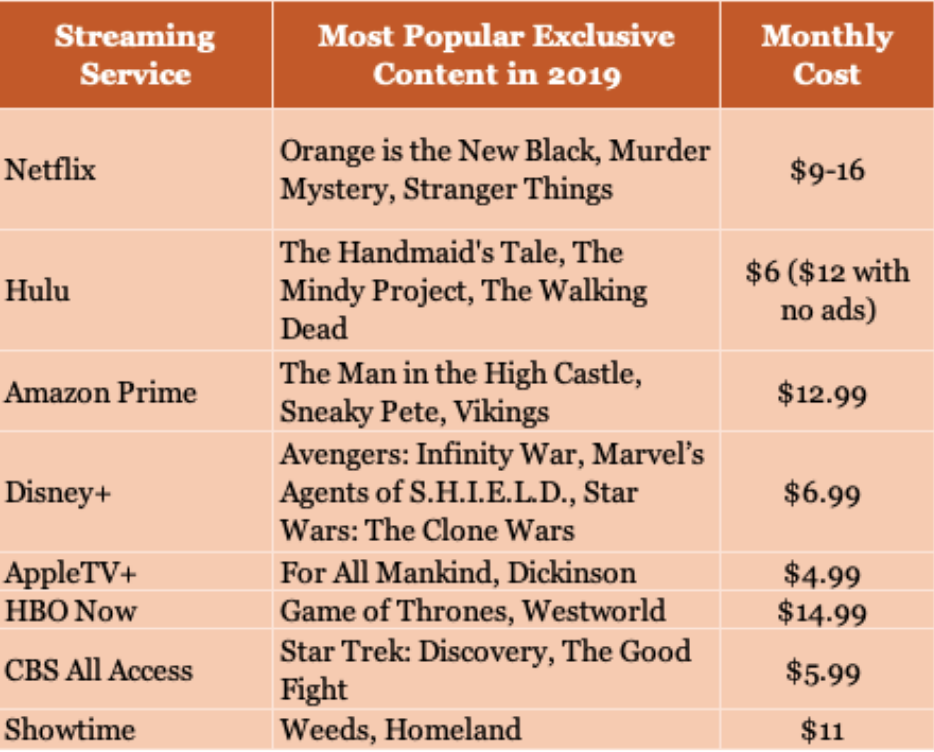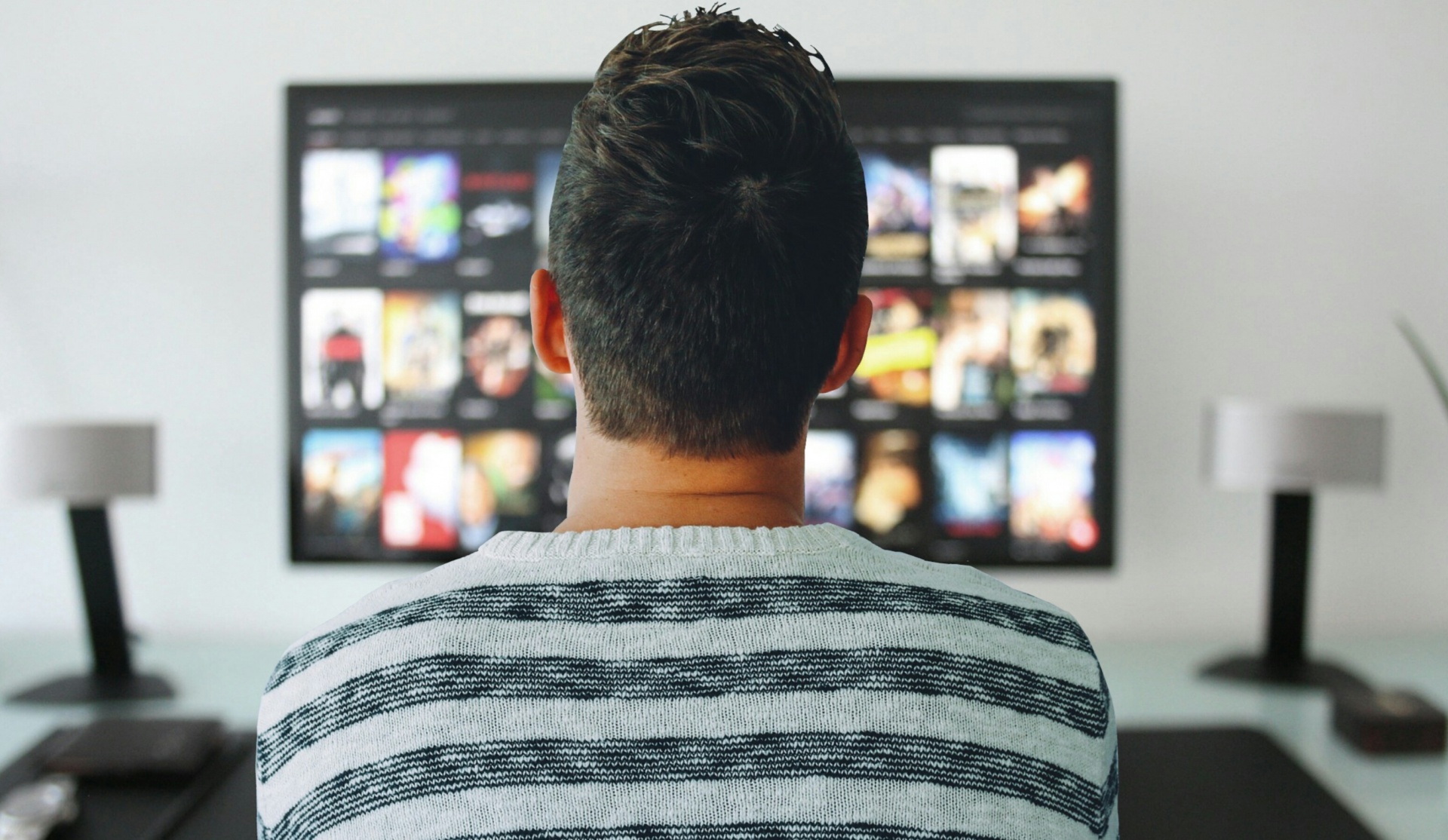While consumers once championed streaming services as the answer to cable woes, streaming services now risk the same fate as cable by offering consumers too many exclusive services at costly prices. With the increasing proliferation of streaming platforms, piracy is returning to the forefront of media streaming.
The Streaming Revolution
At first, watchers welcomed the streaming revolution with open arms. Rather than paying exorbitant prices for lists of unwatched channels and spending hours left on hold by cable customer service, people could finally watch the specific content they desired for lower prices and greater flexibility. Services compiled extensive libraries of popular movies and TV shows and provided a new way to watch weekly TV shows: ad-free binge watching. Streaming services have even begun to utilize consumer data to improve user experiences and tailor the platform to individual needs. For example, Netflix even has algorithms tailored to show different thumbnail artwork to different users based on their preferences and past choices. However, streaming options like Netflix, Hulu, and Amazon must now compete against countless new services, from Apple TV to Disney+.
Cutting out the Middleman
Without competition, Netflix and Hulu thrived as deals with networks like Disney and Comcast NBCUniversal brought in shows and movies such as Hannah Montana, The Avengers, The Office, and more. Yet earlier this year, Comcast NBCUniversal announced that it would be removing hit show The Office from Netflix, inciting outcry and anguish from dedicated watchers. The reason for the decision stems from the upcoming launch of Comcast NBCUniversal’s own streaming service. Comcast is not alone as many services have begun to cut out the middleman by building their own streaming services: Disney has begun to pull Star Wars, Marvel, and Pixar content from Netflix to bolster its own streaming platform, Disney+, while AT&T has announced its plan to eventually pull the show Friends from Netflix and Hulu in preparation for its own service. If you used to watch The Office, The Crown, and Marvel movies on Netflix, your one subscription could potentially become three as every distributor pulls their shows from Netflix to build its own service.
To put the impact of competition in perspective, let’s take an example. In 2008, Netflix signed a 20 million dollar contract with Starz for 2,500 shows and movies, including Ratatouille and Spiderman 3. However, to keep the TV show Friends on Netflix for just one more year, Netflix had to pay $100 million dollars. While Netflix was only in its infancy in 2008 and few could imagine the future scope of digital streaming, the stark increase in the cost of media rights is largely due to what each party has at stake. After all, lovers of Friends may subscribe to an entirely new platform just to watch a single show. Unfortunately, with the rise in streaming platforms, consumers may need to subscribe to two to three services to watch the same three shows they may have once watched on Netflix as fragmentation is likely to worsen before any improvement occurs.
By 2022, nearly every major broadcaster is predicted to launch their own streaming service. A new study conducted by TV Time and UTA IQ has uncovered several downsides to the newfound abundance of streaming options. The study surveyed 6,634 consumers across the United States, Canada, Australia, and the Netherlands, and found that 70% of streaming customers believe that there are too many streaming options.

Figure: A comparison of subscription prices and popular content among various streaming platforms.
A Deloitte study has found that nearly half of U.S. streaming consumers suffer from “subscription fatigue,” frustrated from subscribing to service after service in order to watch their favorite shows and movies; nearly 69% of households in the U.S. subscribe to one or more subscription streaming services, but 47% of consumers have voiced their frustration over the growing number of subscriptions and services required to watch what they want. The rise in the number of streaming services has also increased the price of subscriptions. In May, Netflix has raised their subscription rates by $2 per month- a change that could be linked to preparation for the competition of Disney+, which was introduced in November. Needless to say, having too many choices can be exhausting.
Piracy Rises from the Ashes
Trends suggests that if people need to pay more to watch shows and movies, many individuals will either consume less or search for alternatives. In particular, paywalls, exclusives, and the constant modifying of content is driving users back to cable’s worst enemy: piracy. After years of declining use, BitTorrent traffic has begun to rise once more. A survey of 1,500 British consumers demonstrated that existing piracy rates could double should users face even more streaming services at ever increasing prices.
Users may be attracted to streaming services by bingeable hit shows, but binge-watching culture can also work against these platforms. Within a one-month free trial period, a user could binge watch all the content they wanted and then withdraw from their subscription without paying a cent. In response to this unsustainable format, Netflix and other platforms like HBONow have created original content that airs on a weekly basis. Sound familiar? In a sense, streaming services are simply returning back to the format of cable TV channels. This change arises from the fact that streaming services are competing against one another within the confines of an unsustainable, decentralized business model.
In the days of cable, consumers complained about paying for hundreds of channels that they never watched just to gain access to one or two that they actually did watch. The saturation of the streaming market has led to a renewed version of this bundling problem: users don’t want access to the entire libraries that services have to offer – they only want a few shows from each platform. Why pay at all when illegally downloaded content is free? Piracy originally declined because legally consuming media became easier than illegal options, but now, the only centralized place to find content is through piracy.
The cable industry has consistently raised prices every year, incentivizing consumers to “cut the cord” in favor of streaming services. However, the large number of players in the streaming market has negatively impacted consumers and the once praised streaming revolution. In order to incentivize consumers to continue to pay for content, aggregation of platforms must occur to reduce the number of choices consumers must make; by minimizing competition, platforms will be able to reduce subscription rates as well. Until the streaming sector realizes that the best way to reduce piracy is to offer cheaper options, piracy once more will reign victorious.
